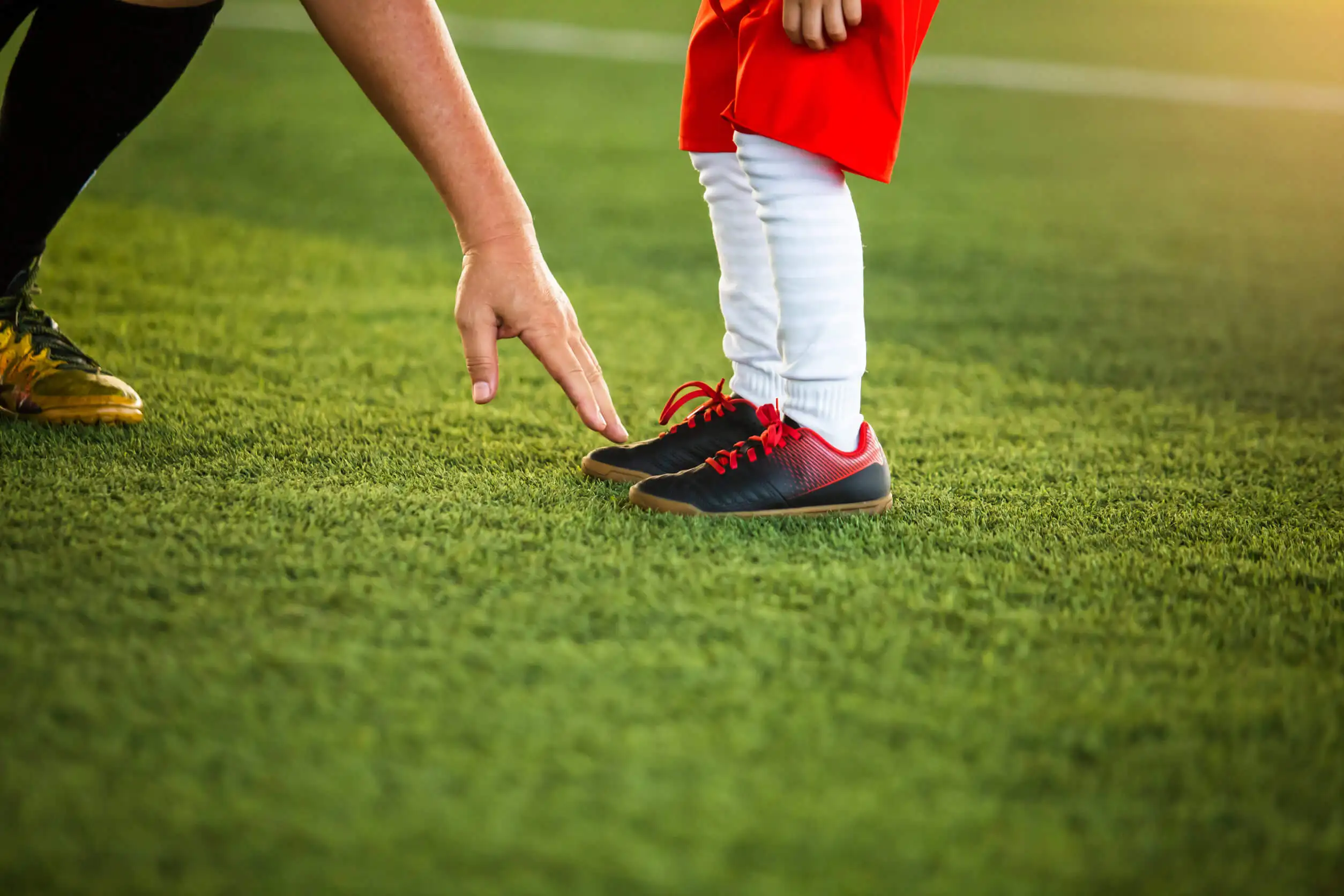Activities to Teach Children About Body Parts


Reviewed and approved by the psychologist Elena Sanz
When you teach children about body parts, it helps them to know themselves and to promote psychomotor development. Little by little, children become aware of their limbs and other body parts, as well as how to use them.
According to the Spanish study “Do I know my body? study, adults must be prepared to guide the child and motivate him/her to perform motor actions that concretize body recognition along with its relationships in time, space and movement.
There are fun ways to educate about the human body; for example, the association of words that allow familiarizing the sound with the parts. They may not learn it overnight, but dedication and creativity are essential to encourage children to understand their physicality.
Why is it important to teach children about body parts?

When you name the parts of the human body in front of your child, you nurture their vocabulary. The National Office of Head Start emphasizes that interaction is essential for language acquisition. In addition, as you repeat the word and point to the part, you boost their comprehension skills. In that order, identification of anatomy is necessary for:
- Knowing the differences between the male and female bodies.
- Promoting independence, respect, and self-care.
- Pointing out that physical distinctions don’t limit the rights between genders.
Likewise, the use of one’s own body is basic in self-discovery for minors, notes an article disseminated by Didactic Publications (all in Spanish). For children who know each part of their body, it’s easier to clarify if they feel any discomfort or pain.
Children have to know how to take care of their body and alert if someone tries to hurt them.
At what age should you teach body parts to children?
It’s incorrect to believe that there is a specific age for children to know what the parts of the body are. The process could start when they are babies with phonetic connection and visual explanation.
It’s simpler for a toddler to know where his mouth is if you mention it and point to your mouth and then to his mouth. It is believed that from the first year, it’s easier to concentrate, retain words, and locate the part.
Like this article? Learn more here: Unschooling: Advantages and Disadvantages for Children
Ways to teach children about body parts
Teaching children about body parts is not a big deal if, instead of obsessing about them learning, you make way for fun activities that you both enjoy.
Explain the functions
If your child knows what anatomy is for, it will be natural for them to identify it. To explain what hands are, teach them to clap their hands. For the eyes, show them how to open and close them. Let them smell some soft aromas so they know what the nose is all about. Have them taste various flavors so they registerswhat the mouth and tongue are.
Play guessing games
An innocent question such as “Where are the eyes?” is key to learning what they are and where they are located. Questions related to the body and proper explanation of their function promote understanding.
Put puzzles together with the little one
Stores offer children’s games to put body parts together. If you prefer a digital format, you can also find anatomy-related puzzles on tablets and smartphones.
The goal is for parents or caregivers to address the topic and work on children’s social skills, visual-motor skills, and critical thinking.

Sing with your child
The benefits of music in children are the promotion of creativity, strengthening of concentration, improvements in psychomotor skills and auditory perception, and reinforcement of language and sociability. So why not teach by singing?
Get a playlist with songs that explain the parts of the body – there are many out there according to the age range. If you prefer, make up the lyrics and back up the act by pointing your finger at the area you mention. For example, while intoning something like “stomp your feet,” perform the action and invite the child to repeat it.
Use illustrations and other visual support
Picture books with humans and animals are ideal for learning. Focusing on the illustration, ask the child to indicate where the donkey’s ears are, the doll’s arms, or parts of other characters, always according to the story told in the text.
Children receive a lot of information through sight, so you can prepare large posters with images of the human body; also, cartoons on television are useful in the teaching process. While looking at these graphics, talk to them about the body parts and with time they will recognize them without help.
Draw a human
Drawing a person is useful in body awareness. One technique is to lay the child down on a large sheet of paper or cardboard, draw his silhouette and together paint the body parts.
Select colors for each area together, so you can classify them. Another way is to use stickers alluding to the parts and place them on the sheet where they correspond. Also, it works to look in the mirror and point out the eyes, nose, ears, mouth, arms, fingers, legs, etc.
Quiz your child
It’s not just a matter of checking your child’s body parts and naming them as you do so; ask them a hint and wait for them to respond. You might ask which part allows them to talk, which limb they run with, or how they listen to music.
Set examples with animals
The child may find it easier to assimilate with animals. Look for stuffed animals, toys, or your house pet and show them that they have eyes, a mouth, legs, and a nose. Take the opportunity to emphasize the particularity of the tail, if it’s an animal that has one.
Count the parts together with your little one
Let the child know that he has 2 eyes, a mouth, 2 ears, 2 arms, 2 legs, a nose, 5 fingers on each hand and 5 on each foot, etc. As the child learns to count, he or she will know how his or body is physically constituted.
We think you may also like to read this article: What We Can Learn from Little Kids
How to approach the topic of private body parts with children?
Don’t be taken by surprise by a child’s concern or curiosity about his or her private parts. The National Child Traumatic Stress Network emphasizes (article in Spanish) that providing correct and appropriate information in childhood about body changes and sexual matters is relevant to their growing up protected, healthy, and secure in their bodies.
At preschool age, young children learn what they usually see. However, sometimes parents opt for nicknames for private parts and thus create a perception of shame. It’s okay to just call them “penis” or “vagina,” and as they grow on their own they will notice the differences between genders.
While you won’t give sex education out of time, find a way to make the child and adult feel comfortable. One key is the importance of the child knowing that he or she has a right to privacy and that no one, not even friends or relatives, should touch him or her inappropriately.
Things to keep in mind when you want to teach children about body parts
When teaching children about body parts, it’s important to use appropriate terms, not nicknames or scientific terms. Also, when using props, make sure they are appropriate image and not photographs of adults. Make sure they understand that, regardless of physical comparisons between boys and girls, they all have the same rights and deserve respect.
All cited sources were thoroughly reviewed by our team to ensure their quality, reliability, currency, and validity. The bibliography of this article was considered reliable and of academic or scientific accuracy.
- Beneficios de la música en los niños. Ayuda en Acción. España; 2017. https://ayudaenaccion.org/ong/blog/espana/beneficios-musica-ninos/
- Charles G. Desarrollo sexual y conducta en los niños. Información para padres y cuidadores. The National Child Traumatic Stress Network. Estados Unidos; 2012. https://www.mendeley.com/catalogue/3f499d49-a81e-340c-adae-310b54a309fa/?utm_source=desktop&utm_medium=1.19.4&utm_campaign=open_catalog&userDocumentId=%7B76576989-d704-49a6-9c36-1ad36772bcf7%7D
- El desarrollo del lenguaje y la lectoescritura emergente y su relación con la preparación para la escuela. Oficina Nacional de Head Start. Estados Unidos; 2018. https://eclkc.ohs.acf.hhs.gov/es/preparacion-escolar/articulo/el-desarrollo-del-lenguaje-y-la-lectoescritura-emergente-y-su-relacion
- Hernández Escalona M, Noa Cománs O. ¿Conozco mi cuerpo? Estudio diagnóstico para la preparación y desarrollo cognitivo y motor en niños de infancia preescolar. Itinerario Educativo. Colombia; 2014. https://www.mendeley.com/catalogue/97938aac-1966-30b0-9ad3-e03c984634ac/?utm_source=desktop&utm_medium=1.19.4&utm_campaign=open_catalog&userDocumentId=%7Bd7395ecd-3302-47ea-bcbf-e05c93871dcf%7D
- Rompecabezas partes del cuerpo humano. Fundación Red. España. https://redcontraelabusosexual.org/producto/rompecabezas-partes-del-cuerpo-humano/
- Sánchez Salmerón A. Importancia de trabajar psicomotricidad en edad infantil. Publicaciones Didácticas. España; 2017. https://www.mendeley.com/catalogue/c8016548-90a0-3a52-b220-bdb9f9868482/?utm_source=desktop&utm_medium=1.19.4&utm_campaign=open_catalog&userDocumentId=%7Bf6837334-ae86-4042-b696-194331a803c6%7D
This text is provided for informational purposes only and does not replace consultation with a professional. If in doubt, consult your specialist.








